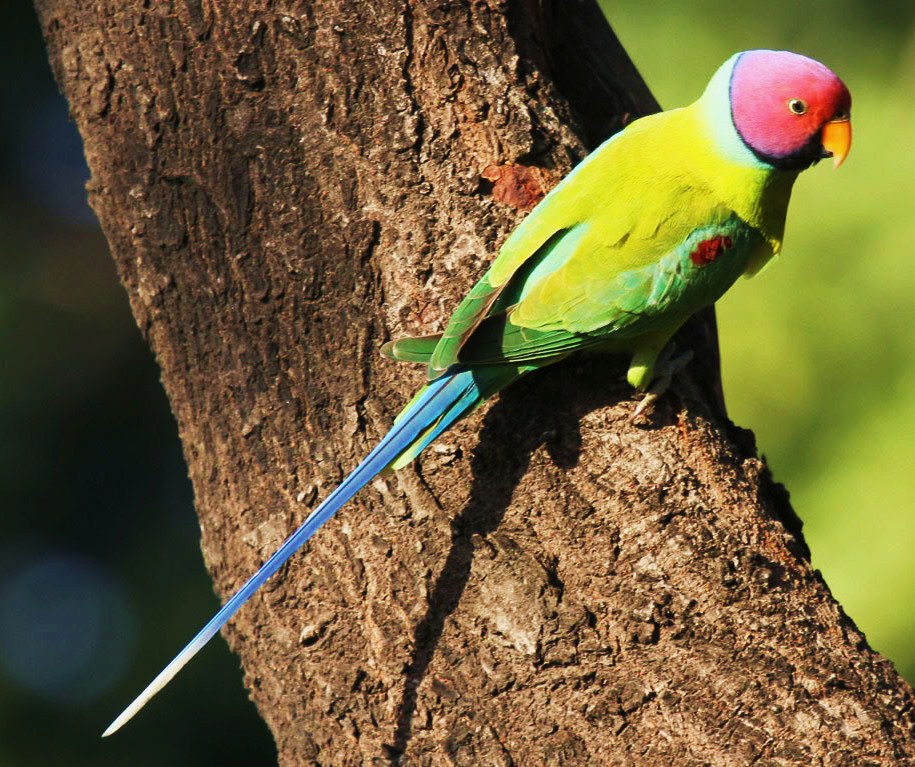Psittacula cyanocephala
 |
| (Photo from UK Airshow Review) |
Common name:
plum-headed parakeet (en); periquito-de-cabeça-roxa (pt); perruche à tête prune (fr); cotorra ciruela (es); pflaumenkopfsittich (de)
Taxonomy:
Order Psittaciformes
Family Psittacidae
Range:
This species is endemic to the Indian sub-continent, being found in eastern Pakistan, throughout India and Sri Lanka, and in Nepal and Bangladesh.
Size:
These birds are 33-36 cm long and weigh 66-80 g.
Habitat:
These birds are found in moist deciduous forests and tropical pine stands, generally preferring open woodlands, but are also found in farmland areas. They are present from sea level up to an altitude of 1.500 m.
Diet:
Plum-headed parakeets feed on seeds, figs and other fruits, nuts and flowers, particularly those of Salmalia, Butea and Bassia. They also eat pollen and leaf buds and are known to damage crops in fruit plantations and rice fields in some areas.
Breeding:
These birds can breed all year round, varying between different parts of their range. Pairs
excavate a hole in a tree or enlarge the holes of other birds, or sometimes use natural hollows in tree trunks or branches or even in crevices in buildings. There the female lays 4-6 white eggs which she incubates alone for 23-24 days. The chicks fledge 6-7 weeks after hatching.
Conservation:
IUCN status – LC (Least concern)
The plum-headed parakeet has a very large breeding range and is reported to be fairly common in Nepal and generally common in India. The population is suspected to be in decline owing to ongoing habitat destruction and is also commonly hunted or food and for the international pet trade.







